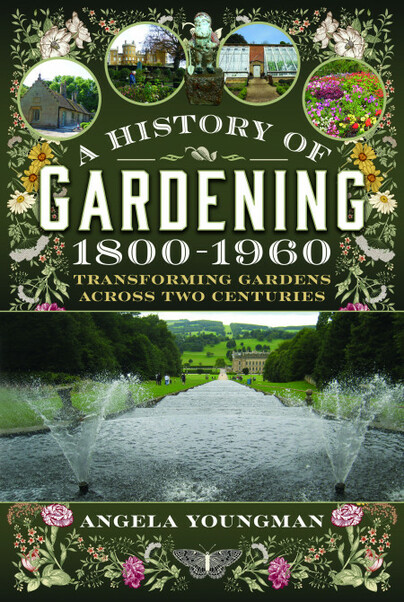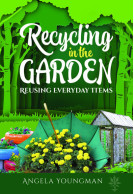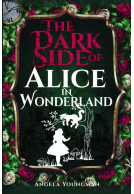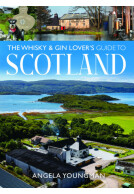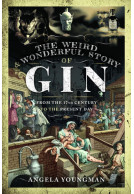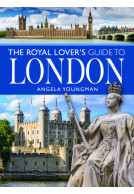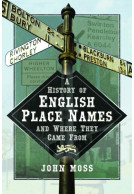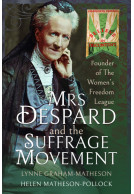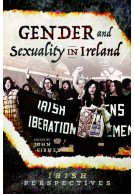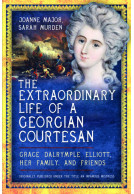A History of Gardening, 1800-1960 (Hardback)
Transforming Gardens Across Two Centuries
Imprint: Pen & Sword History
Pages: 248
Illustrations: 30 mono illustrations
ISBN: 9781399080897
Published: 14th August 2025
(click here for international delivery rates)
Need a currency converter? Check XE.com for live rates
| Other formats available | Price |
|---|---|
| A History of Gardening, 1800-1960 eBook (17.4 MB) Add to Basket | £14.99 |
Between 1800 and 1960, gardening underwent a massive transformation, changing almost beyond recognition. It was a period when the concept of gardening as a leisure activity emerged, along with a vast array of changes in garden styles, plant breeding, the arrival of horticultural societies and shows, brands such as Suttons Seeds, and mass market tourism to garden sites. New retail styles even emerged with the advent of garden centres and containerised plants. Entrepreneurs took advantage of new technology to create products such as lawnmowers, the Wardian case terrarium and the strawberry canopy. Plant specialists searched out exotic plants from far-flung corners of the earth, risking their lives to bring back unusual specimens. Women took up gardening creating careers in a sector that had previously regarded them as little more than capable of doing light weeding or arranging flowers. New standards were established for training, products, plants and seed quality, resulting in the arrival of seeds such as Tom Thumb lettuce and frilly edged sweet peas that are still grown today.
As recognition grew of the need for a green environment, green spaces and public parks accessible to all, gardening styles underwent considerable changes. This resulted in the creation of designs that have become extremely familiar such as carpet bedding so beloved of municipal gardens, rockeries, vegetable rotation, shrubberies, walled gardens, cottage gardens, roof and window gardens. It was a period which even saw garden gnomes taking up residence in gardens large and small.
This is a fascinating exploration of how gardening transformed from necessity to passion! 🌱 Angela Youngman takes readers through the changes that shaped gardening into the leisure activity we know and love today.
NetGalley, Bee Lowe
This book covers a wide range of stories; plant hunters searching for exotic specimens, the evolution of retail gardening, and the development of iconic designs including cottage gardens, rock gardens, and 🌲 alpine gardens. I particularly enjoyed the vivid descriptions that allowed me to easily imagine these varied landscapes, and the story of the garden gnomes was one of my favorite parts! 🏡
There is a chapter titled: 'The Rise of Female Gardeners.' 💖 I also loved the delightful walk-through experience of an English manor house's gardens and employees - it felt like stepping into an episode of Downton Abbey!
Rating: 5 out of 5 stars
NetGalley, Jennifer Pritchard
A History of Gardening, 1800-1960: Transforming Gardens Across Two Centuries by Angela Youngman is an exhaustive exploration of gardening history. It delves into the evolution of gardens throughout the centuries, not only focusing on the wealthy but also on the experiences of people from all social classes. Youngman also highlights the positive impact of gardening on entire communities. She discusses various aspects of gardening, such as catalogs, roof gardens, and children’s window box gardens. This is just a glimpse into the fascinating content I encountered in this book, and I highly recommend it.
Rating: 5 out of 5 stars
NetGalley, Brenda Carleton
Was this book written for me specifically? Wow. It is just what I needed and craved. As a master gardener and scenery appreciator, learning more about gardens and horticulture in 1800-1960 was enlightening and filled me with joy. Where does one begin? There are so many things we take as they are such as raised beds, window boxes, seed packets (Sutton Seeds), and exotic plants. But we don't always know their origins and when they came into fashion.
Author Angela Youngman describes the ingenuity of "Capability" Brown, Jane Loudon, Gertrude Jekyll, and Vita Sackville-West. Gardening was a good occupation during this time but there was a hierarchy. The head gardener was often above performing menial tasks. The reader learns what gardeners wore (only head gardeners had the privilege of wearing bowler hats) and that wealthier children had their own little gardens. Gardening was male dominated but women began to leave their mark and now there are as many female gardeners and designers as male.
This book overflows with wonderful stories such as the Cavendish Bananas, girls studying botany, the Austen family's potatoes, planting for art and design, the effect of gardening on mental health as a cure, walled gardens, how glasshouses were heated, carpet bedding, rose gardens such as Queen Mary's Rose Garden, the concept of stumpery, grottoes, practical uses of artificial rock, advent of horticultural societies (I started one in my home town on a rather smaller scale), illustrated seed catalogues, workhouse gardens, "polite visiting", growing food during the world wars (including public grounds and parks), peat extraction, and the dawn of garden centres.
I have traveled to drink in the most beautiful gardens there are from arboretums to botanic gardens to water gardens to grottoes to castle gardens and am always in awe, continually learning, and perpetually inspired. Though I adored this eye-opening book, including more photos would be marvelous. But this is an easy recommendation to those dream of gardening and those who garden at all skill levels. Such fascinating history!
Rating: 5 out of 5 stars
NetGalley, Colin Edwards
Angela Youngman has a new book out: A History of Gardening, 1800-1960: Transforming Gardens Across Two Centuries. Youngman is a seasoned author, whose books are always worth reading – and this book is very good indeed. I’m a historian with no interest in putting my pinkies in the soil or ricking my back by pulling up tough shoots, but my sister used to be head gardener at a castle and I wanted to assess whether this book would make a good birthday present for her.
The first few chapters tell us what it was like to be a gardener during this period (spoiler: it was better to be a head gardener than an underling). I learned from the chapter on female gardeners that Jane Austen’s mother was good at cultivating potatoes. The author Maria Edgeworth (unjustly neglected in the C21st) writes about “digging up, trenching, manuring my garden” in the 1830s. I enjoyed reading that Swanley Horticultural College admitted women to mixed-sex classes in the 1890-s but appointed a ‘supervisor of ladies’ to accompany them to lectures. Numbers rose from five in 1891 to thirty-four in 1895 and it is gratifying to read that, six years later, Swanley decided to focus purely on women. However, with fees at £80 per annum, only upper middle-class women could afford it.
A couple of chapters discuss Urban gardening and garden styles, e.g. ferns and rockeries. If you had suggested, a week ago, that I would be interested in the spread of garden gnomes, I would have been somewhat sceptical. However, I can confirm that the history of Sir Charles Isham and his gnomes is fascinating. I loved the description of his group of 3” high gnomes on strike with placards. Yes! I’d have those in my garden!
Chapter 6 onwards mostly gives us a fairly chronological history of the symbiosis between gardeners and the commercial aspects of gardening: the phenomenal growth of gardening magazines and their eager readership. There are side-journeys into the highly dangerous world of plant-hunting and an emphasis upon how exotic foreign plants were in the C19th. Frederick Sander, for example, had over sixty greenhouses devoted to orchids. When you realise that less than 1% of bulbs sent back home by plant-hunters survived, the prices that the rich were prepared to pay for really rare (in Europe, at least) plants become understandable, as does the phenomenal impact of the Wardian case.
The Wardian case is one of several examples of (to our modern eyes) incredibly simple inventions that changed our environment. The Wardian case is (at its simplest) an air-tight glass bottle, filled with damp moss. It allows plants to be sent by sea and to survive without watering, despite changes in air salinity and temperature. Although we all know what a lawnmower looks like, imagine the impact upon a world that relied upon men available and willing to swing a scythe. Without the lawnmower, we wouldn’t have a lawn for almost every house.
We read how the philanthropic classes were convinced that giving “the poor” access to gardens would turn them away from the demon drink and other bad uses of their little leisure time and less money. Youngman posits a convincing argument that they were right. That is just one of so many of Youngman’s gently-made arguments that make this book so worthwhile. (And yes, I’ve bought a second copy for my sister because I want to keep this one!)
Rating: 5 out of 5 stars
NetGalley, Rebecca Stewart
Really loved reading about the history of the gardeners, and I kept thinking how much I wish I could share all of it with my grandma. She had a huge garden when I was growing up, and while she would not have read the book (not the best reader), she would have loved hearing all about it... Definitely would recommend this and will be looking for more books from her in the future.
This was a very lovely read.
NetGalley, Melisa Aras
This was a topic that I did not know much about, although I enjoy gardens and mini gardening, I feel like I learned a lot.
In this book, Angela Youngman talks about many things related to gardening during this era from gardeners, to personal gardens, public gardens and even shows and tourism. My favorite chapter to read was the third chapter,,“The Rise of Female Gardeners”. We may associate gardening a lot with both genders and flower gardening even more with women but as we can see from this chapter, the women actually started to play a role later on which is during this time period. Without giving much spoilers, there are many interesting instances in this book, some are still related to women, that may surprise the reader which I think made the book very enjoyable.
One thing I also enjoyed were the literary and other type of media references. I believe this also helps to form a connection with the general audience as well. Youngman also mentioned many newspapers and especially gardening journals which peaked my attention.
There are also pictures, although black and white, at the end of the book which were nice to look at.
Overall, I enjoyed this book and I would recommend it to anyone, especially if they have at least a bit of interest in gardening. However, even without the gardening element, there is still much to learn from this book for its time period.
About Angela Youngman
Angela Youngman is a professional journalist and author living in Norfolk. Her other books include The Dark Side of Alice in Wonderland, Norfolk: A Dog Walkers Guide, Kiddiwalks Norfolk, and Green Roofs. She is a member of the International Travel Writers Alliance and Garden Media Guild, writing for a wide range of travel, tourism, transport, culture magazines and websites. Angela enjoys finding the unexpected and unusual stories relating to destinations such as London.







